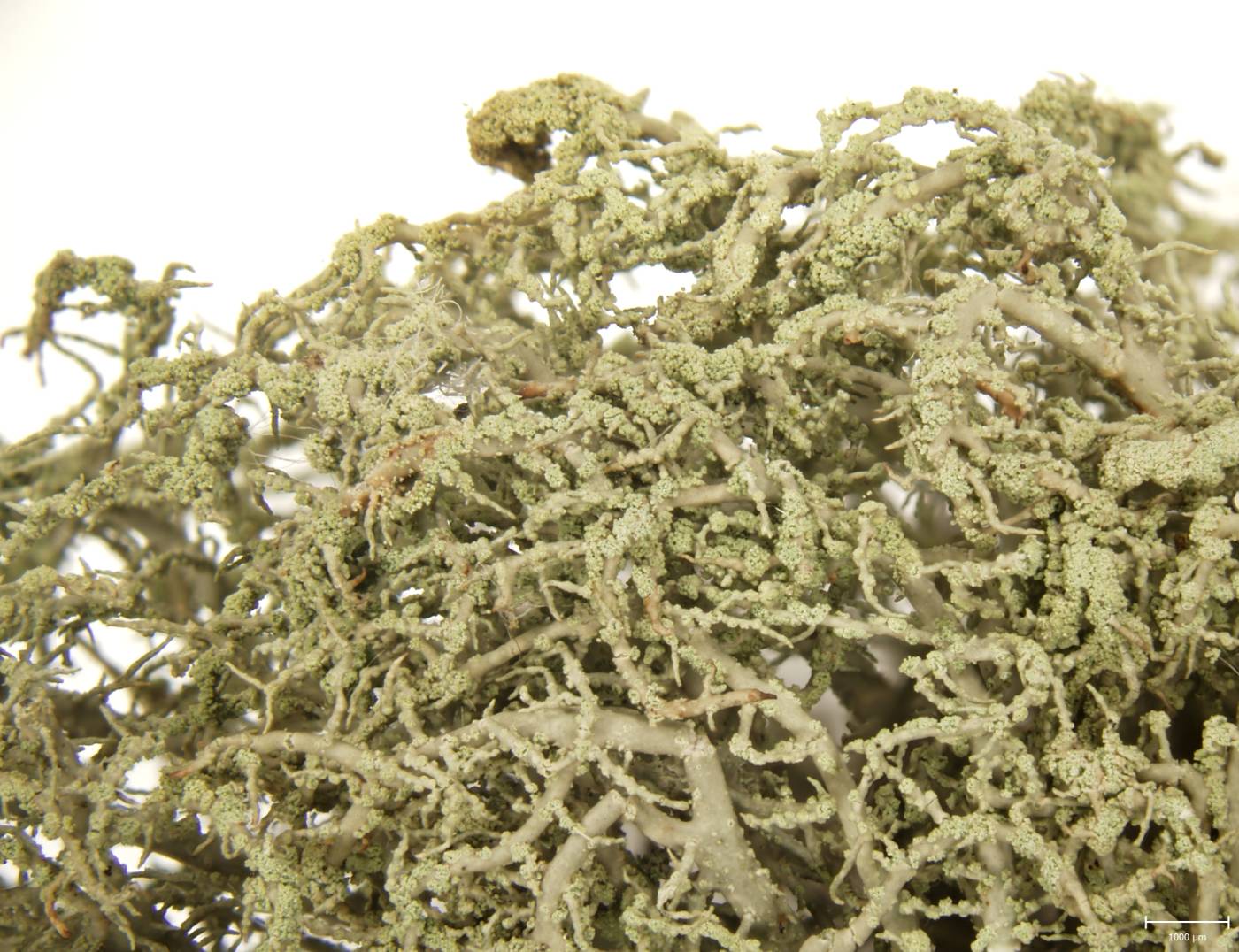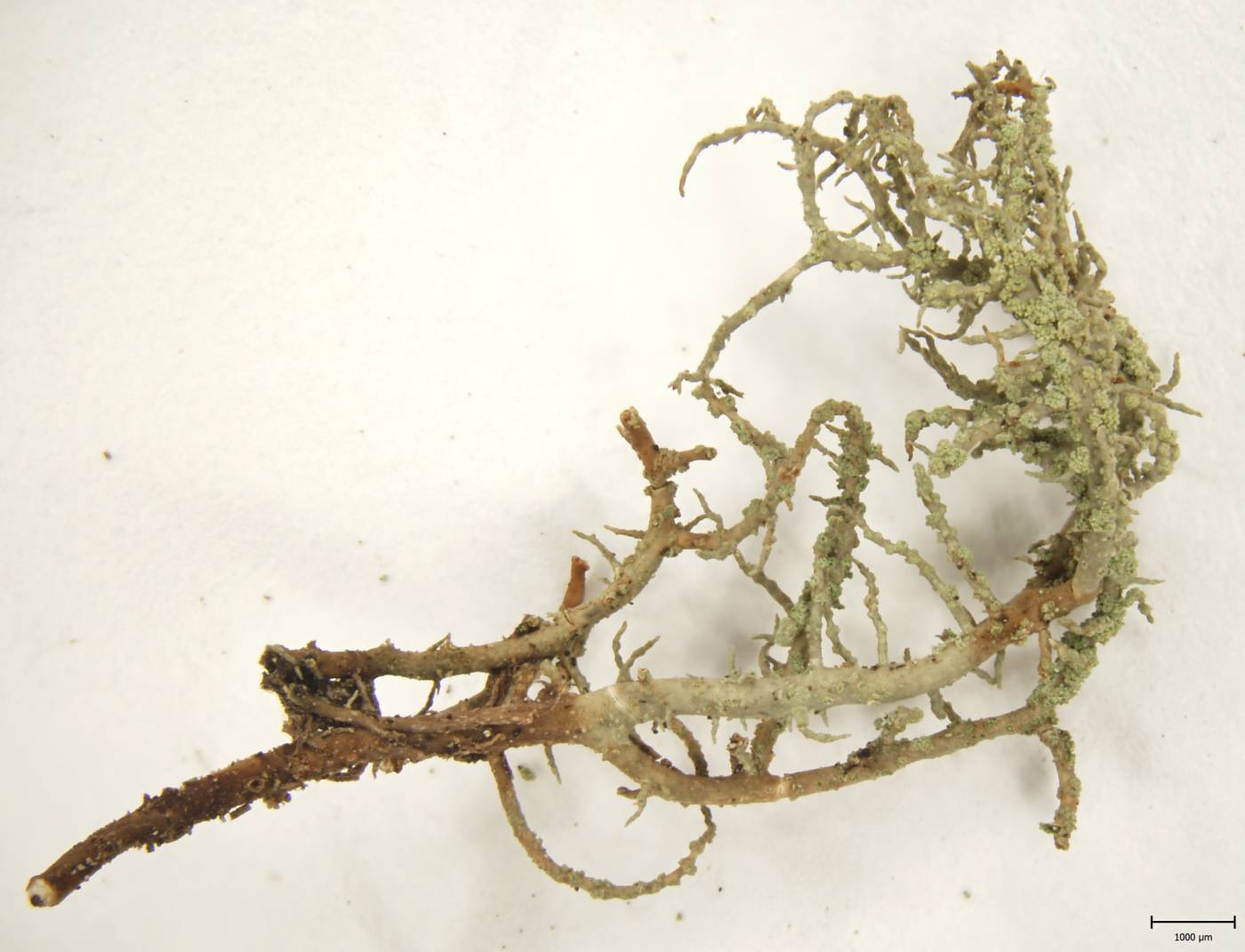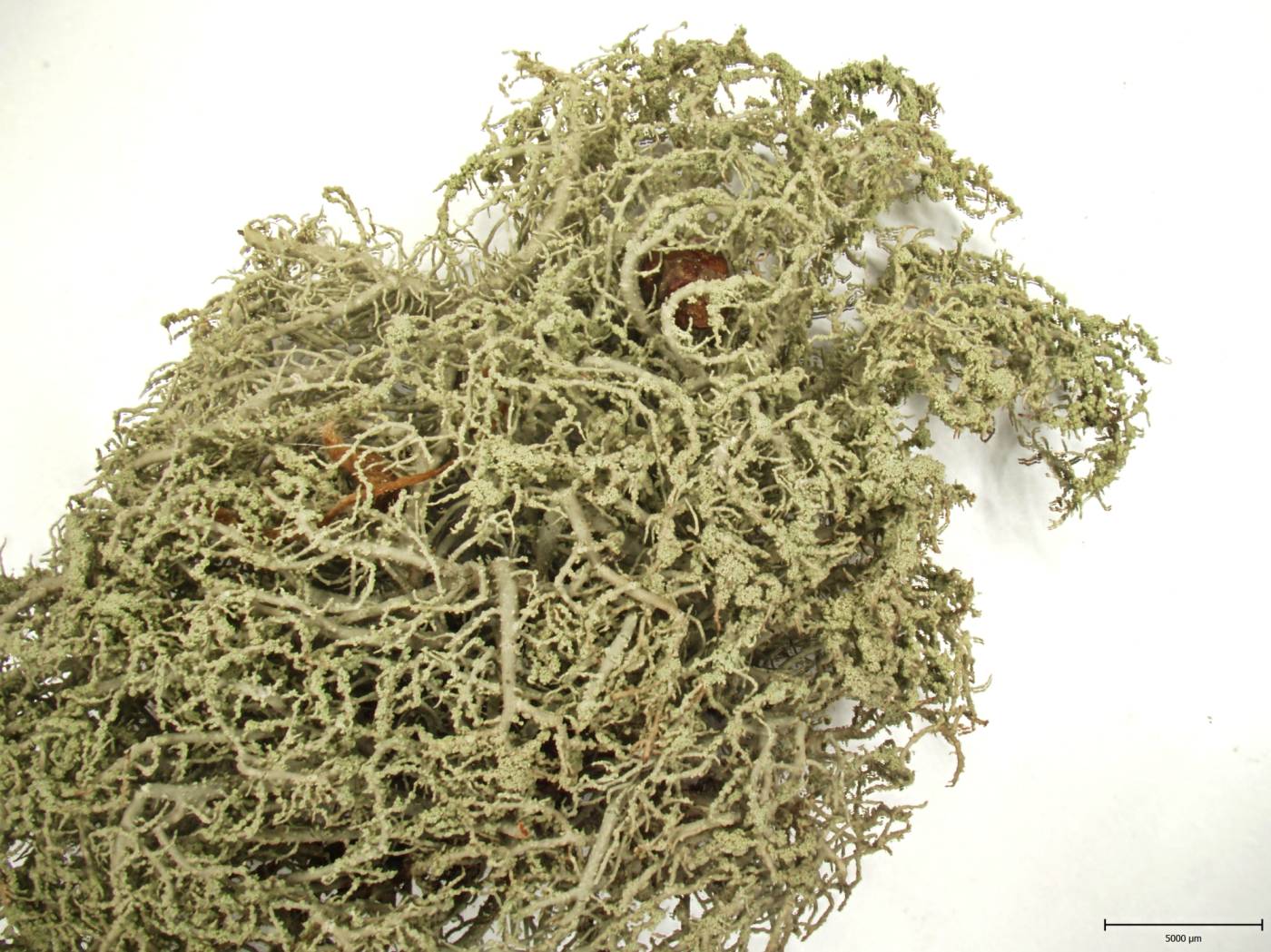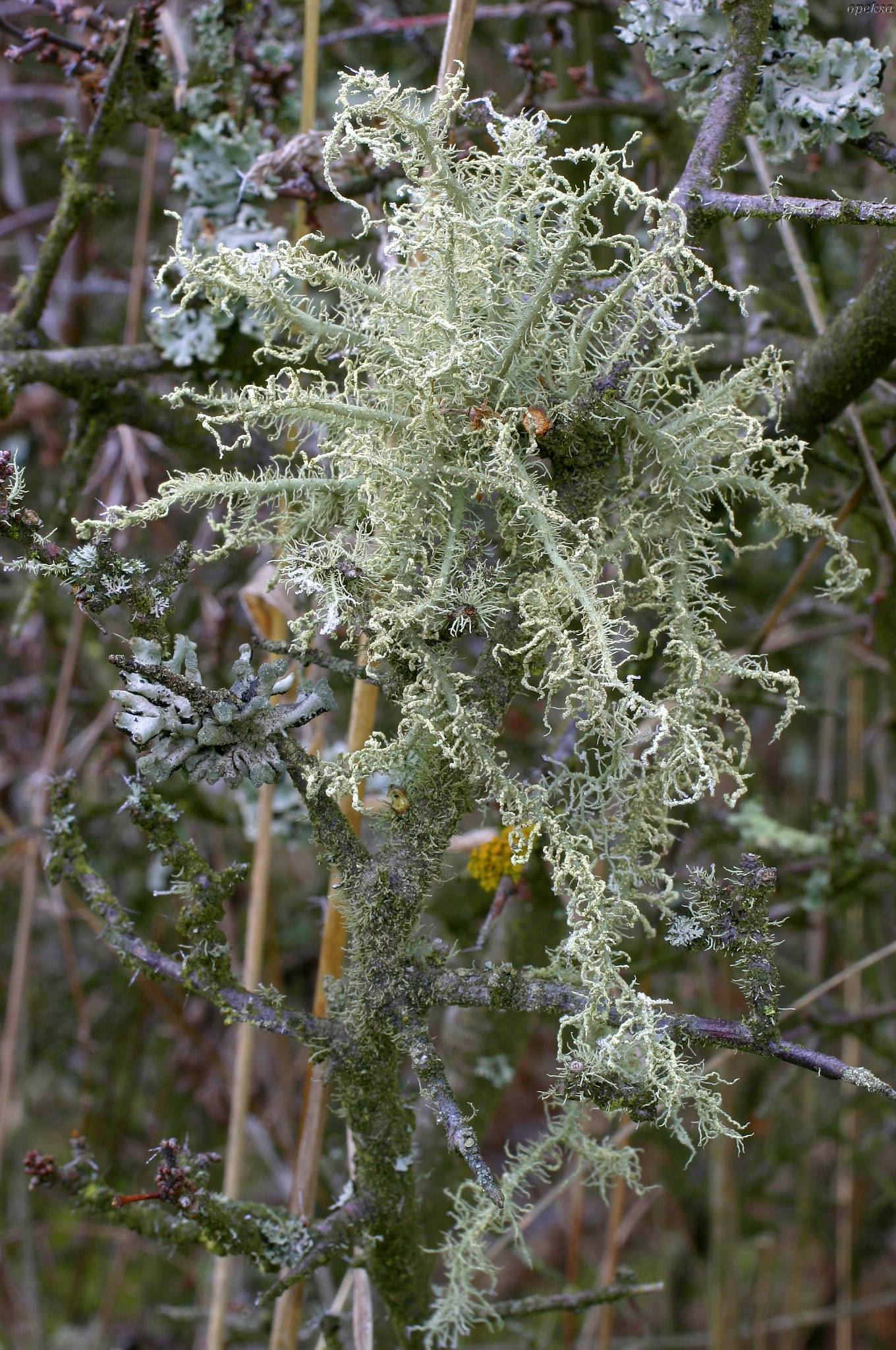One of the most common Usnea species, characterized by anisotomic-dichotomous branching, conspicuous convex or flat soralia on irregularly deformed lateral branches and presence of salazinic acid in the medulla. In some cases, it is very difficult to distinguish from U. perplexans, whose soralia reach the central axis and have a wrapped-up cortex around them. Both species belong to a morphologically variable and phylogenetically still unresolved lineage Usnea barbata-intermedia-lapponica-substerilis (Clerc & Naciri 2021).
In Europe, it is a widely distributed epiphyte with continental tendencies. In the Czech Republic, it is currently being recorded on various trees, mainly blackthorn shrubs and larch forests in the western part of the area.
Literature: Clerc P. & Naciri Y. (2021): Usnea dasopoga (Ach.) Nyl. and U. barbata (L.) F. H. Wigg. (Ascomycetes, Parmeliaceae) are two different species: A plea for reliable identifications in molecular studies. – Lichenologist 53: 221–230.
taxonomic classification:Ascomycota → Lecanoromycetes → Lecanorales → Parmeliaceae → Usnea
Red List (Liška & Palice 2010):CR – critically endangered
Occurrence in the Czech Republic
All records: 115, confirmed 102. One click on a selected square displays particular record(s), including their source(s).




